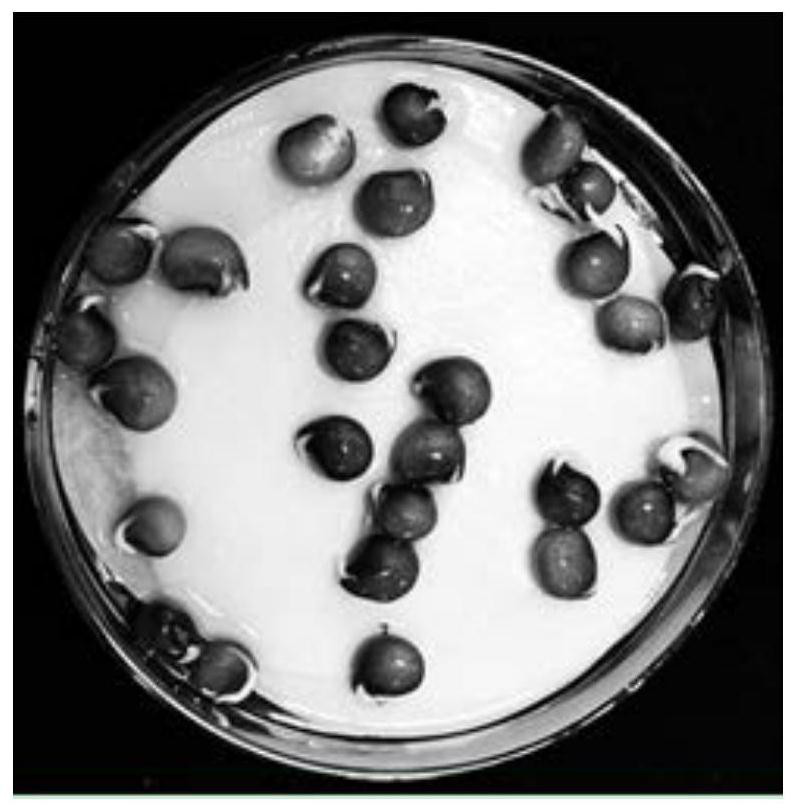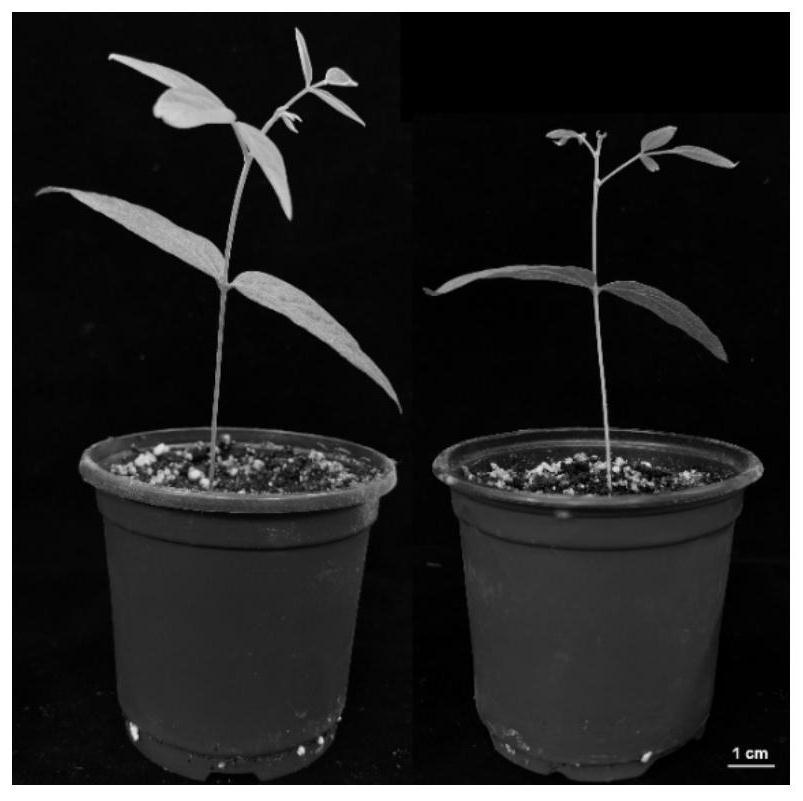Culture method for promoting pigeon pea seeds to quickly germinate and grow into seedlings
A cultivation method and seed technology, which are applied in the fields of plant life science basic research and agricultural production, can solve problems such as inability to guarantee emergence rate, increase seedling and labor costs, and slow growth of seedlings, so as to reduce seed costs and labor costs, reduce The difference between replicates, the effect of increasing the germination rate
- Summary
- Abstract
- Description
- Claims
- Application Information
AI Technical Summary
Problems solved by technology
Method used
Image
Examples
Embodiment 1
[0040] (1) Select seeds and sterilize: first sterilize pigeonpea seeds with plump particles and the same size with 75% ethanol for 50 seconds, then soak with 20% sodium hypochlorite solution for 6 minutes, and finally rinse with sterile water for 4 times.
[0041] (2) Seed soaking: Put the sterilized seeds in a clean pot, add water about 3 times the volume of the seeds to soak the seeds, and put them in a constant temperature incubator with the temperature set at 37. ℃
[0042] (3) Seed germination: After soaking the seeds for 24 hours, pour out the water in the pot and gently rinse the seeds with new water, then take a clean pot, cover the bottom with a layer of gauze, place the soaked pigeonpea on the gauze and cover it evenly layer, add water to completely soak the gauze and store 0.5cm deep water in the basin. Cover the pot with a breathable lid, place it in a constant temperature incubator, set the temperature at 37°C, and spray water once in the morning and evening to e...
Embodiment 2
[0049] (1) Select seeds and sterilize: first sterilize pigeonpea seeds with plump particles and the same size with 75% ethanol for 50 seconds, then soak with 20% sodium hypochlorite solution for 6 minutes, and finally rinse with sterile water for 4 times.
[0050] (2) Seed soaking: Put the sterilized seeds in a clean pot, add water about 3 times the volume of the seeds to soak the seeds, and put them in a constant temperature incubator with the temperature set at 37. ℃
[0051] (3) Seed germination: After soaking the seeds for 24 hours, pour out the water in the pot and gently rinse the seeds with new water, then take a clean pot, cover the bottom with a layer of gauze, place the soaked pigeonpea on the gauze and cover it evenly layer, add water to completely soak the gauze and store 0.5cm deep water in the basin. Cover the pot with a breathable lid, place it in a constant temperature incubator, set the temperature at 37°C, and spray water once in the morning and evening to e...
Embodiment 3
[0058] (1) with (1) in embodiment 1
[0059] (2) Seed soaking: Put the sterilized seeds in a clean pot, add water about 3 times the volume of the seeds for soaking, and put them in a constant temperature incubator with the temperature set at 25°C.
[0060] (3) Seed germination: After soaking the seeds for 36 hours, pour out the water in the pot and gently rinse the seeds with new water, then take a clean pot, cover the bottom with a layer of gauze, place the soaked pigeonpea on the gauze and cover it evenly layer, add water to completely soak the gauze and store 0.5cm deep water in the basin. Cover the pot with a breathable lid, place it in a constant temperature incubator, set the temperature at 25°C, and spray water once in the morning and evening to ensure the pot is moist.
[0061] (4) After 1.5 days, pigeonpea seeds germinate and grow about 1-2 cm embryos, and the pots are taken out of the incubator.
[0062] (5) with (5) in embodiment 1
[0063] (6) with (6) in embodi...
PUM
 Login to View More
Login to View More Abstract
Description
Claims
Application Information
 Login to View More
Login to View More - Generate Ideas
- Intellectual Property
- Life Sciences
- Materials
- Tech Scout
- Unparalleled Data Quality
- Higher Quality Content
- 60% Fewer Hallucinations
Browse by: Latest US Patents, China's latest patents, Technical Efficacy Thesaurus, Application Domain, Technology Topic, Popular Technical Reports.
© 2025 PatSnap. All rights reserved.Legal|Privacy policy|Modern Slavery Act Transparency Statement|Sitemap|About US| Contact US: help@patsnap.com



